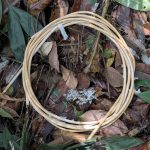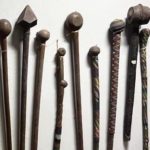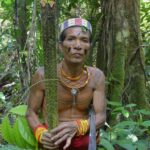The manufacture of bow strings from plant materials is a skill that Bushmen have practiced for a relatively short period. Around 1900, they learned from neighboring Bantu-speaking tribes how to use Sansevieria fibers to create bow strings. Before this, they relied solely on animal skin stripes and sinews. Nowadays, after approximately 120 years, hemp has completely replaced animal products in the production of bow strings.
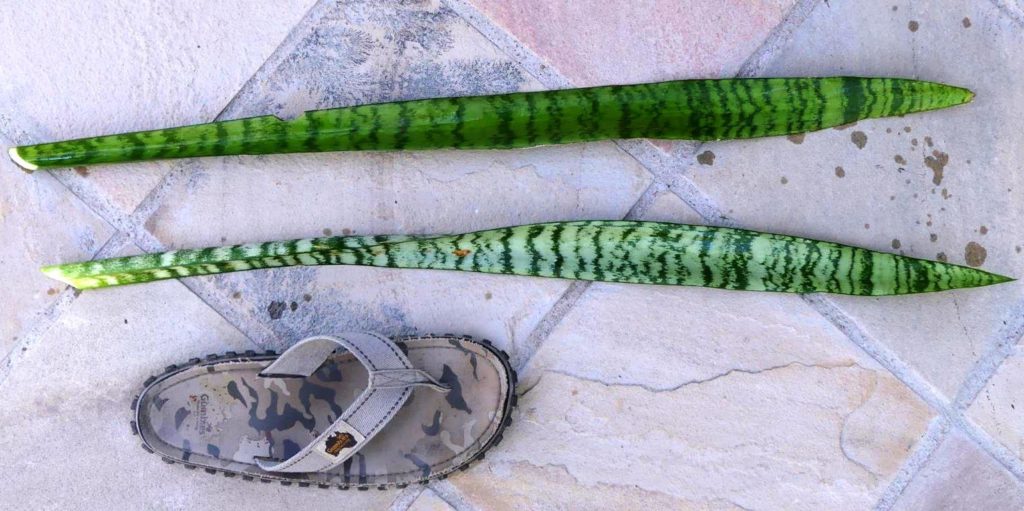
Which Sanseviera species are used by bushmen to produce bowstrings?
Depending on their location and availability, bushmen prefer to use one of the following three Sansevieria species to make bow strings: Sansevieria cylindrica, Sansevieria hyacinthoides, or Sansevieria trifasciata.
Sansevieria cylindrica, as its name implies, has round and cylindrical leaves. Although native to Angola, it has spread far beyond its original range. Other species with similar round leaves, such as S. pearsonii, are also used for string-making. Producing strings from this species is difficult as the thick, round leaves are often rigid and must be flattened before use.
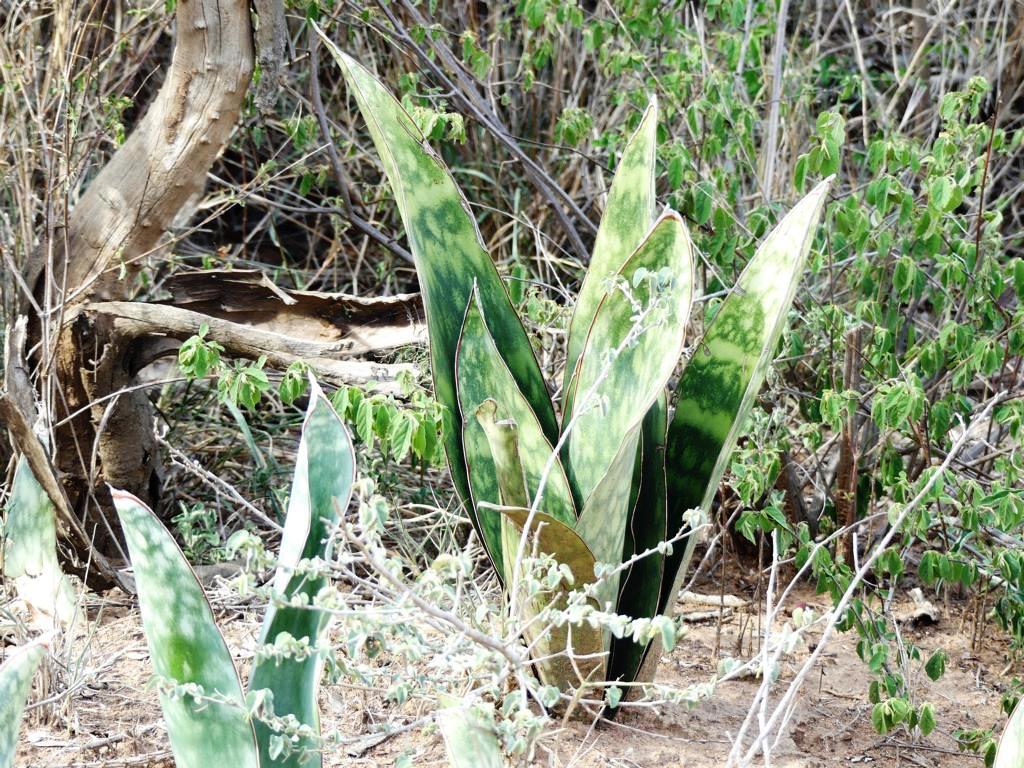
The next species, S. hyacinthoides is the most common Sansevieria species found in the bushveld. It has thin, flat, and relatively short leaves that are tough, thin, and leathery. These leaves often have brown or dry voids interrupting long stretches of fibers.
S. trifasciata, on the other hand, is a versatile species with long, narrow, and relatively soft leaves that are easy to work with. It is often used as an ornamental plant in suburban gardens and is preferably harvested by bushmen for demonstrations. However, due to its high water content, it is difficult to find it in the wild, as Kudu and Eland like to browse it.
These Sansevieria plants are known by various English names, such as snake plant, mother-in-law’s tongue, piles root, or bowstring hemp. In Afrikaans, they are called Skoonma-se-tong, Ambeiwortel, or Haasoor, while bushmen (Khoi-san) refer to them as Kai or Ghaiwortel.
Harvesting the Leaves
Ideal leaves for producing strings should be long, fleshy, and free from any voids. Finding such leaves in nature is challenging, but they should offer a sound output of long fibers when they are found. Leathery leaves are not an issue; they still provide suitable fibers, but working with them is more strenuous. Once suitable leaves are located, they should be cut low to the ground but above the white stem that connects them to the rhizome. After harvesting, the leaves can be stored for a long time in a dry, shady place without deteriorating. The cut area on the base will shrink around the fibers and seal against water evaporation from inside the leaf. In this article here on this website, we already described the general inner structure of Sanseviera leaves and their common uses.
Exposing the leaf fibers
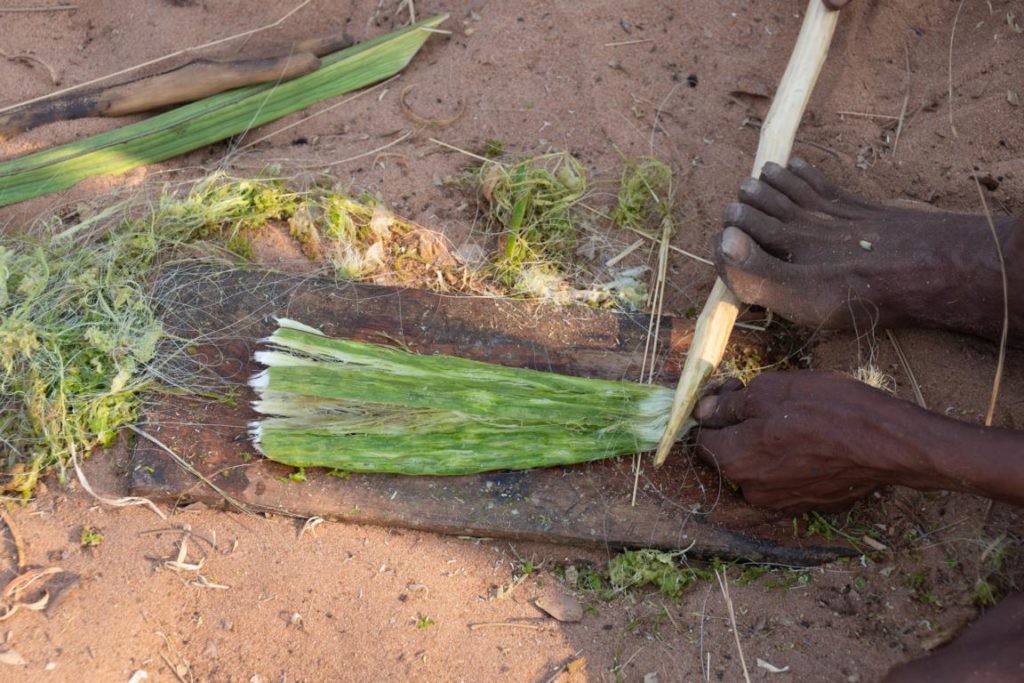
There are two distinct techniques for removing the epidermis and cells around the fibers, and the choice of method depends on the plant species. The ‘Shaving technique’ is appropriate for the ‘fleshy leaf’ species, such as S. trifasciata. In contrast, for the ’round or leathery leaf’ species, S. cylindrica and S. hyacinthoides, the ‘Pounding- and shaving technique’ is required.
Shaving technique for fleshy leaves
To perform the ‘Shaving technique’ on a fleshy Sansevieria leaf, the person would hold the leaf at its base in their left hand while holding a round stick with a sharp carved edge in their right hand. The stick’s edge is then pressed towards the leaf using the toes, while the leaf is based on the underside of a flat piece of wood or rock. The epidermis and plant cells are shaved off the fibers by repeatedly pulling the leaf through the stick’s edge and the base wood with a fluid motion. After finishing one side of the leaf, the person turns the remaining plant bundle around and removes the epidermis and cells on the other end. A bundle with clean fibers will remain once all the shaving actions are complete.
Pounding- and shaving technique for round or leathery leaves
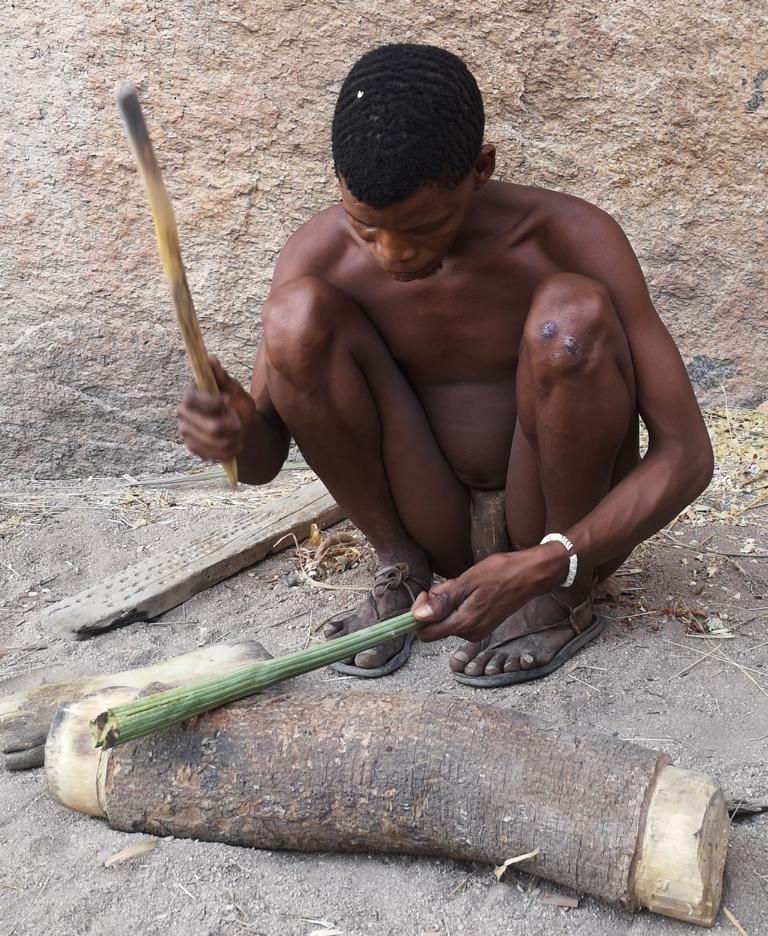
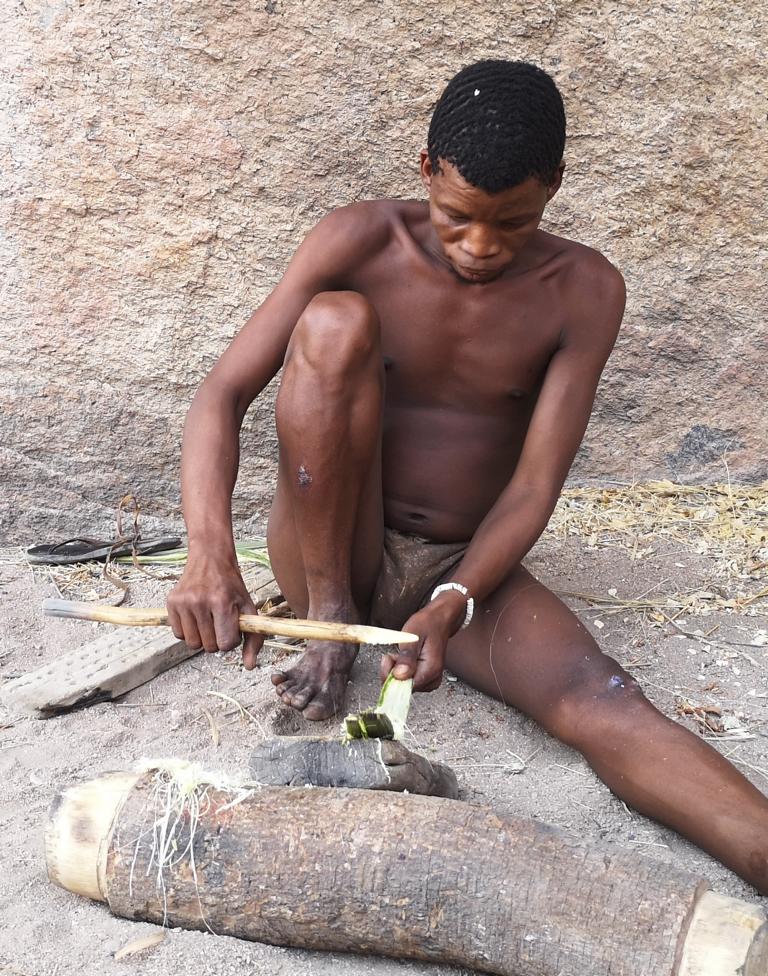
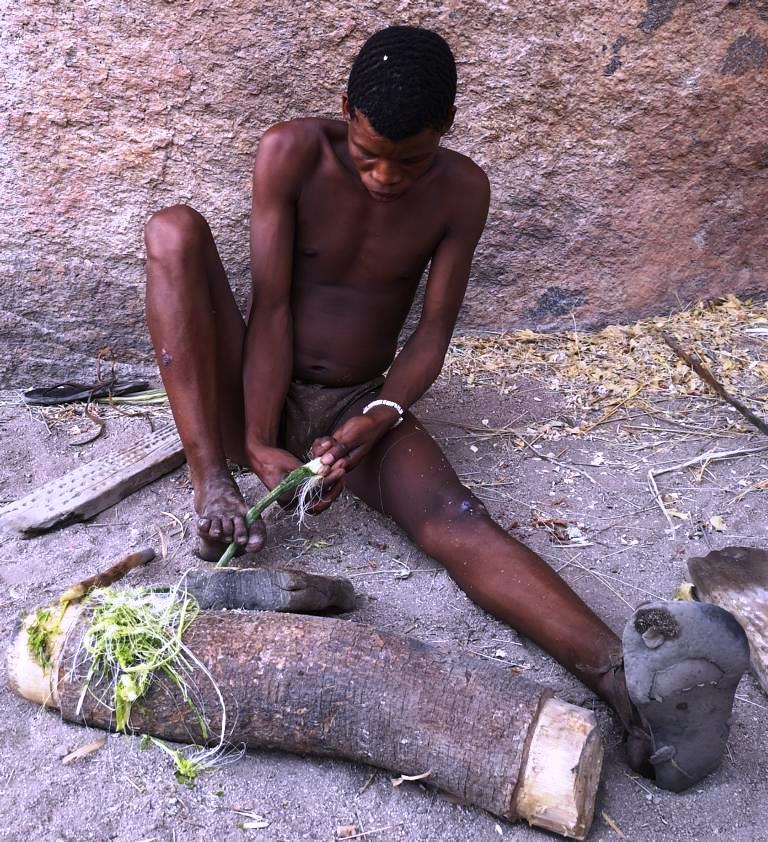
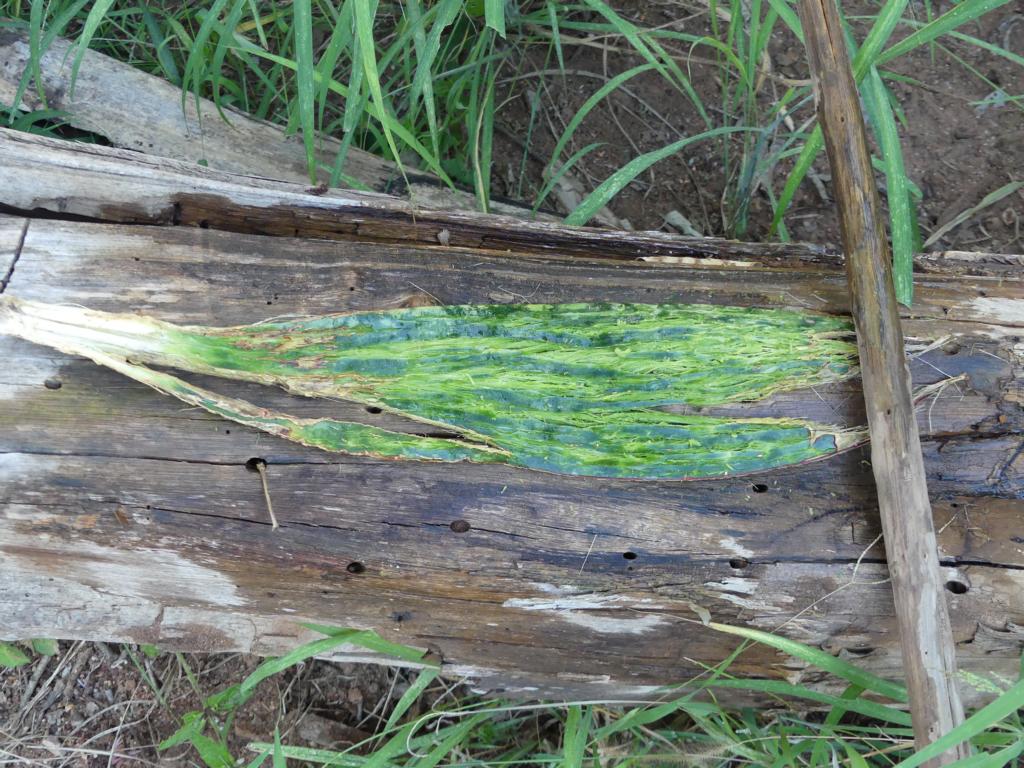
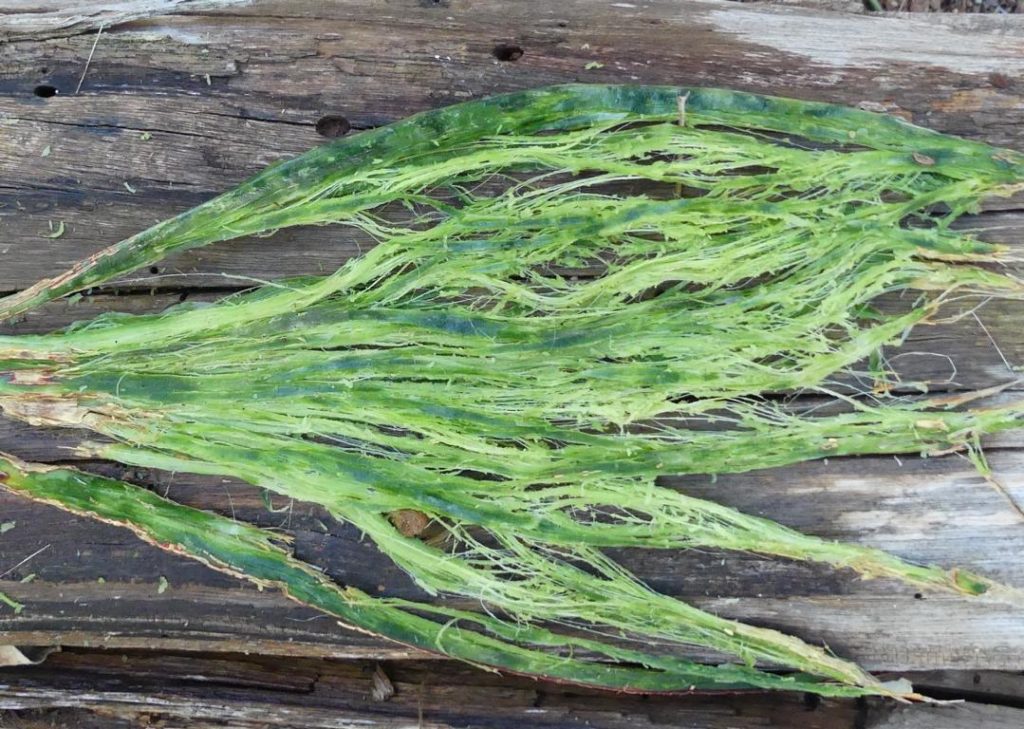
Before applying the shaving technique, the fleshy Sansevieria leaf needs to be slightly pounded with a piece of wood. Water can be sprinkled on the leaf during pounding to make the fibers more flexible if available. The blows, however, should not be too hard to avoid damaging the fibers. As described above, the plant bundle can be shaved when most fibers are broken up. This will remove the remaining epidermis and plant cells, resulting in bundles of clean fibers again.
Twisting the string
The technique of twisting strings is a common practice around the world. First, two bundles of clean fibers are tied together with a knot and separated into two smaller bundles. These two bundles form a V-shape from the knot. Then, the V-shaped double bundle is placed on the upper right leg, and with a smooth motion of the flat right hand, both bundles are moved forward about 15 cm separately simultaneously. At the end of this motion, both bundles are rolled backward as one bundle. This creates a right-turned string with left-turned bundles. By doing this, the fiber strings are oriented parallel to the length of the string, which is parallel to the pulling forces. This orientation provides the highest combined strength of all utilized fibers.
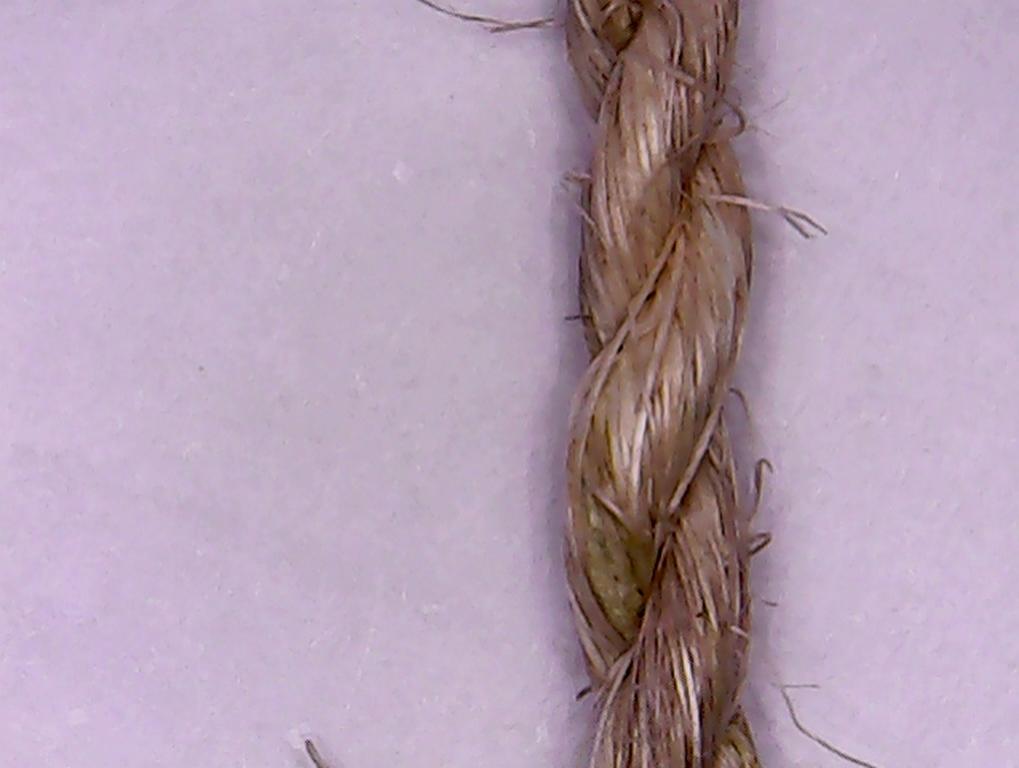
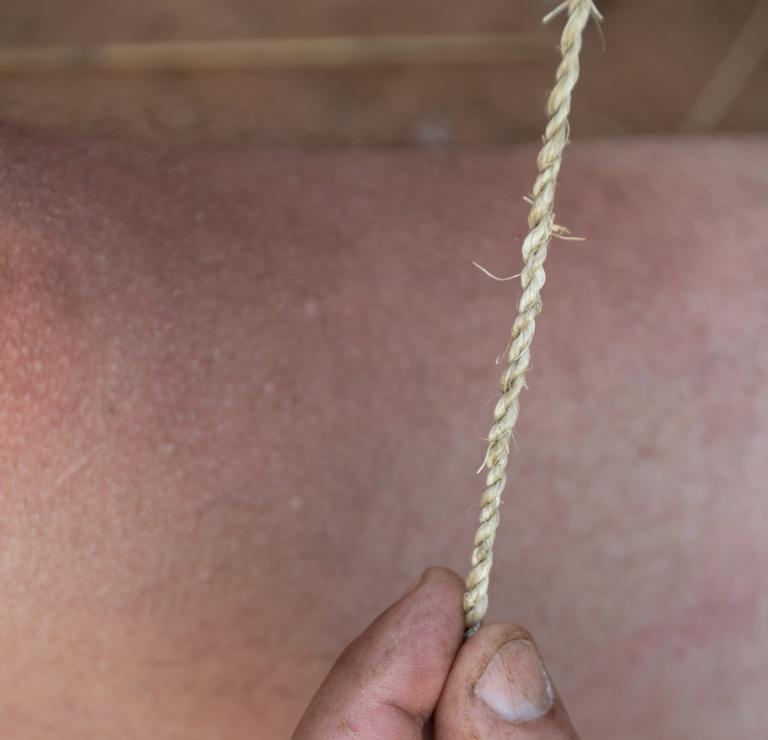
It is always a good idea to start with two different lengths of fiber bundles initially. This makes it easier to alternate adding new bundles to the string. The rolled string can be knotted off once the desired string length is reached.
Some additional remarks should be added to this explanation. First, the thickness and density of the string can be influenced by the number of fibers used and the density of rolling, but the basic actions remain the same as described above. Second, the rolling action on the upper leg will grab all fibers in the vicinity, which can be painful for newcomers as it may pull out leg hairs. Finally, the motions described are for right-handed people, and left-handed people should perform the same actions on the other side.
To keep it simple, roll two bundles forward and one bundle back
Drying the bowstring
Bowstrings for hunting should consist only of twisted fibers without other plant cells and be tightly twisted. Once the string’s desired length, thickness, and uniformity are achieved, it should be dried in fresh air. To do this, bushmen typically hang the string on a tree with a lightweight at the lower end. This will keep it straight without stretching it. In northern Namibia, the string will typically be completely dry and stiff after about three days of hanging.
Finishing the bowstring
Once the bowstring has completely dried, the bushman will apply beeswax. The wax is kneaded into the string to surround most of the fibers. This makes them waterproof and reduces friction between them when under stress, such as during shooting. Moreover, the wax helps to glue small fiber ends to the main string, reducing the likelihood of premature wear. All of these functions make a beeswax-treated bowstring much more durable. Finally, the finished bowstring is rolled into a bundle and can be used whenever necessary.
Once a bow stave has been produced following the instructions outlined in a previously published article, cord stops are prepared on both ends. On one end, a sling loop is attached. The other end will hold the string with multiple wrappings behind an inbound wooden cord stop. As mentioned above, refer to the photos in the article for guidance.
Typically, the loop in the string is knotted, but skilled individuals may twist the loop directly into the string.
When mounted at a brace height of a maximum of 20 cm / 8″, the bowstring’s tension depends on various factors. The correct tension can be determined by the sound of a high-pitched “zzhing” when twanging the string. However, the final test will be shooting the new bow.
Lessons learned about making bow strings from plant fibers:
- Three main species of Sanseviera plants in Namibia provide fibers for bushmen.
- The fleshy leaves of S. trifasciata can be shaved with an edged stick against a flat piece of wood or rock to remove the epidermis and surrounding fiber cells.
- Leathery and rounded leaves of S. cylindrica and S. hyacinthoides must be carefully pounded and shaved.
- Clean fiber bundles are twisted into a uniform string by rolling two bundles forward and one back.
- After twisting the string, it is dried and treated with beeswax for waterproofing and increased durability.
.



